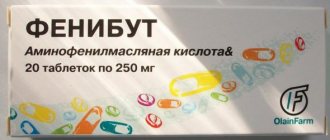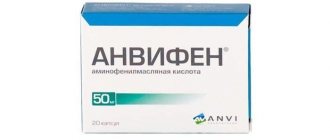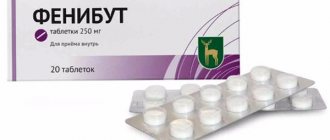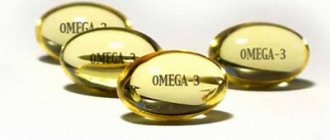There are situations when banal fatigue, resentment, anger overflow and a person literally falls into a painful state of neurosis. This is already a disease and doctors should help cope with it. The person is offered both consultations with a psychologist and medicinal corrective therapy. Phenibut may be prescribed for neurosis. The article discusses what kind of drug this is and the features of its use?
Description of the pharmacological agent
Phenibut is a nootropic drug (nootropic), the action of which affects various functions of the brain (memory, confidence, thinking, logic, attention).
Belongs to the category of psychotropic, nootropic medications. Important! Phenibut is an arbitrary phenyl gamma-aminobutyric acid. This substance acts as an inhibitory mediator of the central nervous system in the human body.
The drug is available in powder form (100 mg, 0.25, 0.1 g), in capsules or in the form of white flat-cylindrical tablets, which are packaged in blisters of 10 pieces each. The tablet has a chamfer and a groove.
The blisters, together with an annotation for the medicine, are placed in cardboard boxes. One pack can contain one, two, three, five blisters with tablets.
Important! Doctors prescribe Phenibut for diagnosing mild nervous and anxiety disorders, neurological conditions of varying severity (neuroses), and improving psycho-emotional state. We can say that this medicine helps a person cope with depression.
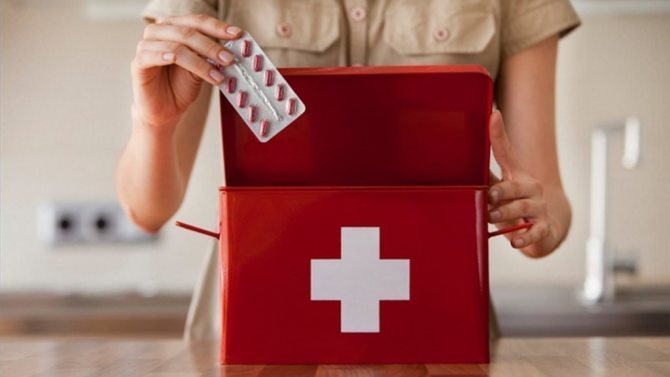
The main active ingredient is aminophenylbutyric acid. One tablet of phenibut contains 0.25 g.
Additional components, components:
- colloidal silicon dioxide;
- microcrystalline cellulose;
- potato starch;
- calcium stearate;
- sodium carboxymethyl starch.
Phenibut, available in powder form, contains potato starch, lactose, and calcium stearate, which are additional components.
Various pharmaceutical companies produce a tranquilizer under different names, for example, “Phenibut”, “Phenibut-ANVI”. These are the same drugs. They have a similar composition and are produced using the same technology. At the same time, according to reviews from doctors and patients who took Phenibut, drugs from Latvian pharmacological factories have the best qualities.
The stimulating effect and effectiveness of Phenibut is not accompanied by an increase in motor excitation, depletion of the body's functional reserves, addiction to the medication, or the development of dependence on it.
Phenibut is a nootropic drug. It is often prescribed by specialists to relieve anxiety, fatigue, depression, insomnia, accompanied by dark thoughts.
Therefore, Phenibut is also taken for panic attacks; reviews of the drug in this area are characterized by positive dynamics. Many patients note increased performance, a cheerful mood and restful sleep that come with taking the medicine, which helps eliminate dark thoughts.
In addition to the main nootropic and antihypaxic effects, Phenibut has an anxiolytic, antiplatelet, psychostimulating and antioxidant effect. Thanks to a complex of active substances, the drug helps fight the main manifestations of a panic attack:
- general weakness;
- decreased concentration of attention;
- insomnia;
- asthenia;
- labile mood;
- irritability;
- increased anxiety;
- headaches.
Therapeutic effectiveness of the drug for VSD
Phenibut is an analogue of GABA and phenylethylamine. In nature, GABA is the most important brain metabolite, which ensures the normal functioning of nerve tissue.
GABA improves attention, memory, and the efficiency of brain activity, that is, it has a nootropic effect. Phenylethylamine performs tranquilizing functions in a normally functioning body.
Thanks to its action, anxiety is relieved, anxiety and fear are eliminated, and sleep improves. The effect of the drug imitates both of these substances, that is, it acts as a nootropic with a tranquilizer effect.
Most doctors prefer to classify Phenibut as a drug that has a pronounced nootropic effect and a weak tranquilizing effect. With the help of the medicine, the state of internal tension, mood lability, excessive emotionality and other behavioral deviations are effectively relieved, and side effects are minimal.
The indications for the use of Phenibut are wide, but its effect is most active when an adult or child needs to simultaneously maintain performance and eliminate anxiety.
The action of Phenibut is as follows:
- reducing the level of internal tension;
- elimination of anxiety, fear, worry;
- sleep becomes normal and complete;
- improvement of cerebral circulation;
- improvement of functional brain activity;
- reducing the severity of problems with speech and movements (because of this effect of Phenibut, it is often prescribed to children over 8 years old for stuttering), etc.
As practice shows, the effect of Phenibut on people over 65 years of age produces a stimulating effect. The active substance does not cause relaxation or lethargy in elderly patients, and side effects are kept to a minimum.
After using the drug Phenibut for VSD, its therapeutic effectiveness is discovered.
It relieves the manifestations of VSD:
- the person ceases to be irritable;
- the emotional and psychological state is normalized;
- the feeling of heaviness in the head region decreases with VSD;
- the pain and dizziness stops;
- normalization of sleep processes occurs during VSD.
Use of Phenibut in childhood
Until children reach 8 years of age, it is not recommended to take the special drug Phenibut. For patients aged 8 to 14 years, the doctor usually prescribes 1 tablet per day.
It can be taken at one time or divided into 2 doses at equal intervals. It is usually recommended to take Phenibut medication at 9 a.m. and at the same time in the evening.
The course of treatment with Phenibut should not exceed 4 weeks.
The prescription of the drug Phenibut, both for children and adults, is carried out exclusively after consulting a doctor in a specialized institution.
How is the drug used to treat adult patients?
You should take the medicine Phenibut for VSD after meals. The medication should be swallowed and then washed down with a small amount of water.
To treat VSD in adults, the drug Phenibut should be used three times a day. For patients over 65 years of age, doctors prescribe 2 tablets per day for VSD.
To prevent problems caused by motion sickness in a vehicle, you need to take Phenibut 2 hours before the trip. If you already feel sick and the first signs of nausea appear, then it is useless to use the remedy.
After a one-time use of the medication Phenibut, pain in the head area during VSD is eliminated. To prevent the appearance of migraines, drink 1 tablet of the drug for a 10-day period.
Side effects and symptoms of overdose
At the beginning of taking Phenibut, it can provoke the conditions that it is intended to combat: increased irritability, anxiety, migraines, drowsiness, as well as dizziness, nausea and vomiting, which soon passes.
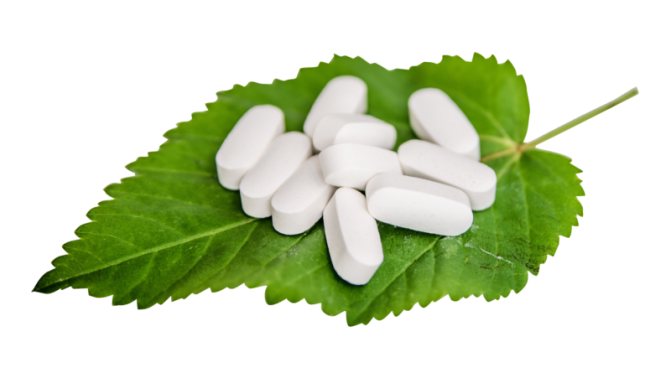
In rare cases, side effects are observed, mainly drowsiness, allergies, migraines and irritability. If they persist for a long time, you should consult a doctor.
Exceeding daily doses of Phenibut can provoke an overdose. Its possible symptom is an increase in all side effects. Severe drowsiness, nausea and vomiting, depression of consciousness are signals of an overdose. Further, fatty liver degeneration, liver and kidney failure may develop.
To help with an overdose of Phenibut, you need to do a gastric lavage, induce vomiting, and then take activated charcoal or another absorbent. You need to consult a doctor - in case of overdose, symptomatic therapy is recommended. Phenibut does not have specialized antidotes.
Medicines for neurosis
There are 3 types of forms of manifestation of neurosis.
- Hysteria is a condition accompanied by overexcitation of the central nervous system, high blood pressure, and panic attacks.
- Neurasthenia is a depressive state accompanied by insomnia, apathy and exacerbation of fears.
- Obsessive-compulsive neurosis involves a person performing certain actions that turn into a ritual (checking to turn off electrical appliances, even while understanding the absurdity of anxiety), which leads to the formation of OCD.
Drug treatment of neurosis in adults should be used strictly as prescribed by a doctor. An examination by a specialist will help determine the form of the disease and its severity. Based on the conclusion, tactics for the treatment of neurosis will be formed.
Groups of drugs used for depression and neurosis:
- to eliminate tension, antidepressants are used;
- medications for anxiety and phobias - tranquilizers;
- sedatives;
- nootropic medications help improve brain function and protect the central nervous system from harmful factors.
Drug release form and composition
Sedatives help improve the emotional state of a neurotic person. Plant-based tablets are not addictive and have virtually no side effects, which is what makes the category of sedatives so popular when choosing therapy.
Indications for use:
- chronic fatigue;
- irritation;
- sense of anxiety;
- apathy.
At the initial stage of using a sedative, the opposite effect may occur: the person will suffer from drowsiness and loss of strength. But after a few days, the patient becomes more balanced and able to respond adequately to irritating factors.
Valerian tincture
The medicine contains valerian and ethyl alcohol 70%. The liquid has a dark brown color and a bitter-spicy taste. Included in the group of sedatives with a hypnotic effect.
Indicated for emotional overexcitation, hysterics, and sleep disturbances.
Contraindicated in an apathetic, depressed state. Do not take if you are intolerant to any of the components of the drug.
Not recommended when feeding or carrying a child. Able to influence reaction speed. Not for use by children under 12 years of age due to the alcohol-containing component.
Dosage for adults: 30 drops, for children: 15 drops, 3-4 times a day. The duration of the appointment is determined by the doctor.
Barboval
The drug belongs to the group of sedatives and contains high concentrations of ethyl alcohol and bromoisovaleric acid. Available in drops for oral use. It is a clear liquid with a specific odor.
Indicated for nervous disorders with increased excitability, insomnia, and the initial stage of tachycardia.
Contraindicated in myocardial infarction, diabetes, renal failure. Not used for asthma, obstructive cough.
The medicine causes drowsiness and inhibition of reactions, therefore it is contraindicated when driving or working at high risk, requiring quick reactions. Not used during lactation and pregnancy.
The drug is taken 30 minutes before meals. Adults take 20 drops 3 times a day for a week.
Phenibut is a nootropic (anxiolytic) drug. The production of the drug is carried out by countries that were previously part of the Soviet Union.
These include Russian, Belarusian and Latvian manufacturers. Regardless of where the company is located, Phenibut contains the same components.
Initially, Phenibut tablets are tested for quality. They are supplied to the pharmacy chain after the drug has received approval from the Ministry of Health as a result of clinical trials.
In 2014, the sale of Phenibut is carried out exclusively with a prescription issued by the attending physician in a special medical institution. The cost of Phenibut is from 130 to 150 rubles. The package contains 10 pieces of the product in tablet form. The medicine Phenibut, produced in Latvia, can be bought for 210-220 rubles.
In addition to tablets, you can also buy a whitish powdered substance called Phenibut on the pharmacological market. The powder is highly soluble when in contact with water or alcohol. The active effect of the substance begins 3-5 minutes after the drug Phenibut has been ingested.
When taking Phenibut flat-cylindrical tablets orally, you may experience a certain sour taste. The package contains one plate on which there are 10 pieces of medication. Each tablet contains 250 mg of active substance.
Before taking the drug Phenibut for VSD, you should read the instructions for use. For storage, you should choose dark places with a temperature that does not exceed 25 degrees Celsius. Phenibut is prohibited for use if 3 years have passed since the date of manufacture.
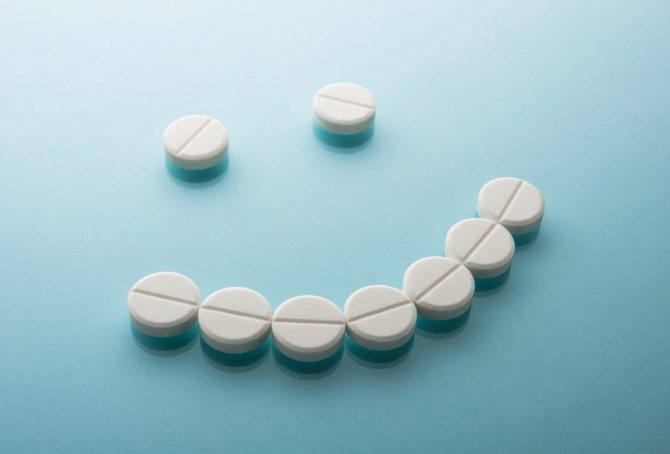
Although Phenibut for VSD is characterized by a positive effect on the human body, in some cases it is not recommended for use.
The medication is prohibited for patients:
- with kidney and liver diseases, since it is in them that the metabolization of the constituent substances occurs. This leads to increased stress on these organs;
- in childhood (up to 8 years). At this time, the child’s central nervous system is only being strengthened, so consciousness after using the nootropic drug Phenibut may be depressed;
- if you are allergic to any components of Phenibut.
If a woman in labor is still prescribed the drug Phenibut for the treatment of VSD, the child must be fed with artificial formula, excluding breast milk. If this is not done, then the baby will receive an aminophenyl oily acid substance, as a result of which there will be a detrimental effect on the fragile organs of the central nervous system.
Instructions for use
Phenibut is intended for oral administration in separate courses, the duration of which varies from 1 to 1.5 months.
Method and dosage
It is recommended that adults take tablets in a daily dose of 0.75-1.5 grams three times a day. In cases where this is advisable, it is allowed to increase the daily dose to 2.5 grams.
The single maximum permissible dose for an adult under 60 years of age is considered to be a dose equal to 0.75 grams of the drug. It is not recommended for older people to take more than 0.5 grams of the drug at one time.
Patients who suffer from dizziness due to inflammation of the inner ear, as well as those people who are diagnosed with Meniere's syndrome, are prescribed the drug Phenibut according to the following scheme: take it during periods of exacerbations, 0.75 grams three times a day for 5 days. 7 days.
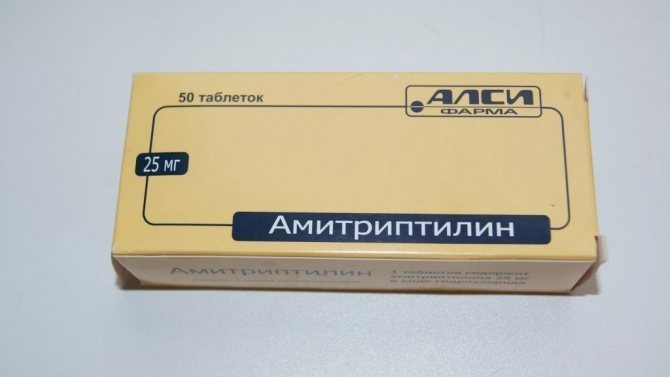
The dose is reduced to 0.25-0.5 grams three times a day when the severity of symptoms of vestibular dysfunction decreases (the drug in a similar dosage should be taken for 5-7 days), then treatment is continued for another 5 days, taking 0 times a day .25 grams of Phenibut.
If the disease occurs in a relatively mild form, it is recommended to use Phenibut in a daily dose of 0.5 grams; the course of taking the drug lasts 5-7 days. Divide the dose into two doses.
Then treatment is continued for one to three weeks, taking 0.25 grams of the drug once a day. For the treatment of dizziness that is caused by vascular diseases or injuries, Phenibut is prescribed in a daily dose of 0.75 grams of this drug.
It is recommended to divide it into three doses. As a rule, the course of treatment lasts up to two weeks.
The duration of therapeutic courses with Phenibut varies from 1 to 1.5 months.
Phenibut for the treatment of the disease
The drug should be prescribed to adults and children only by the attending physician. Phenibut is prescribed:
- to normalize the psycho-emotional state (fear, anxiety, psychopathy);
- with severe asthenic syndrome;
- to normalize and improve mental activity;
- for sleep disorders, insomnia (dyssomnia), frequent nightmares;
- for the prevention of anxiety in adults;
- for obsessive-compulsive neuroses;
- to prevent motion sickness (sea sickness);
- with alcohol abscinosis, addiction, diliriosis syndrome, delirium tremens; decrease in emotional activity.
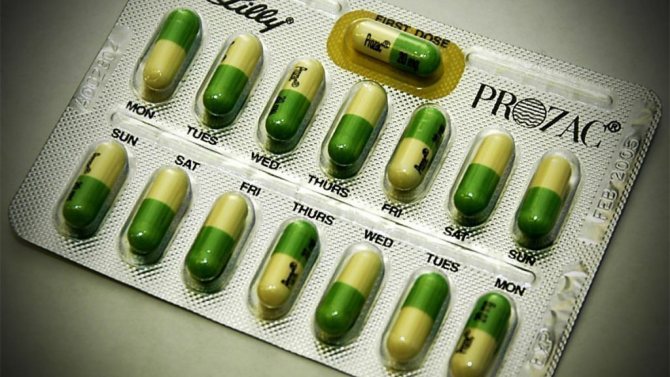
Indications for the use of phenibut are also: Meniere's disease, otogenic labyrinitis, stuttering, nervous tics, enuresis in children, dizziness, migraine caused by dysfunction of the vestibular apparatus, primary anterior-open glaucoma, discirculatory encephalopathy.
Phenibut is also prescribed to women during menopause (during the premenopausal period), as well as to people whose profession is accompanied by severe mental stress and frequent stress (to prevent stressful conditions).
Phenibut increases the duration of action of hypnotics, narcotic analgesics, antipsychotics, antiparkinsonian, anticonvulsants, drugs. The tranquilizer increases the therapeutic effect of antiepileptic drugs, and therefore can be prescribed during nootropic therapy for people suffering from frequent attacks of epilepsy.
How to take Phenibut for adults
Dosage and course duration are prescribed individually. Much depends on the purpose of the appointment, stage, duration of a particular disease.
According to the instructions for the use of phenibut in adults for various conditions, it is recommended to take tablets in a daily dose of 0.75-1.5 g (one or two tablets twice, three times a day). In some cases, the doctor may increase the daily dose to 2.2-2.5 g.
The maximum permissible single dose of a tranquilizer for an adult under 57-60 years of age is 0.75 g of phenibut. For older patients - 0.5 g at a time.
On average, the duration of the course for adults ranges from 21 days to one and a half months. The optimal course of treatment is from 14 days to three weeks. In some cases, the duration of treatment may be increased by the doctor.
How to take phenibut for children
The medication is intended only for children over eight years of age and only if necessary! The tranquilizer is contraindicated for children of younger age groups, as indicated in the instructions.
For children from eight to fourteen years old, the daily dose of Phenibut is 0.75 g (three tablets of 0.25 g per day). The indicated dose is divided into three doses. It is worth noting that since the dosage of the nootropic is quite low, the best option for children is powder. This will help avoid overdose when treating children.
If necessary, it is permissible to increase the single dosage to 0.3 g, but only on the recommendation of the attending physician.
Instructions for use
The nootropic is intended for oral use. When treating, strictly follow the dosage indicated in the instructions or prescribed by your doctor. Tablets and capsules are taken after meals. The medicine should be washed down with plenty of water without biting or chewing.
Advice! You should not take Phenibut before meals, as the medicine may cause irritation to the gastrointestinal mucosa.
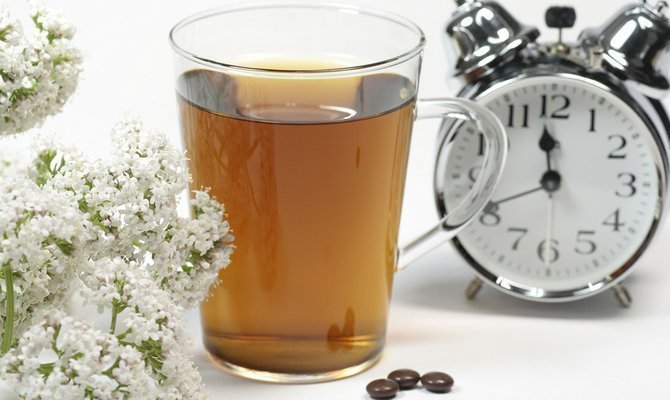
The maximum permissible dose of nootropic at one time is 750 mg (3 tablets) for adults, 500 mg (2 tablets) for people over 65 years old, 300 mg for children 8 - 14 years old and 150 mg for children under eight years old.
With long-term use of Phenibut, it is very important to monitor changes in indicators of the functional activity of the liver, the picture of peripheral blood. During treatment, refrain from performing work that is associated with a risk to health and life, activities that require increased concentration of attention, high speed of psycho-motor reactions.
If elderly patients take Phenibut, they do not feel apathy or passivity and can perform normal (everyday) work. Phenibut is effective if the patient suffers from panic attacks due to VSD.
In combination, the product helps with hypertension, headaches, and blood pressure. Phenibut is prescribed for cervical osteochondrosis, vegetative-vascular dystonia, tachycardia and other problems in the cardiovascular system.
In addition to getting rid of VSD, the medicine is prescribed by a doctor for the following manifestations:
- uncontrollable fears;
- various neuroses;
- motion sickness in transport;
- phobic conditions;
- alcoholism;
- stuttering;
- nightmares;
- rapid fatigue;
- diuresis dysfunction;
- nervous tics;
- dizziness due to improper functioning of the vestibular apparatus;
- involuntary urination of an inorganic nature;
- open-angle glaucoma;
- delirium tremens and others.
After using Phenibut for VSD, autonomic and neuropsychiatric dysfunctions are eliminated.
Phenibut is a strong medication, so using it on your own without medical supervision is not recommended. Only a specialist can understand whether a person needs treatment and, if necessary, prescribe the optimal dosage and course of treatment.
Indications and contraindications for use
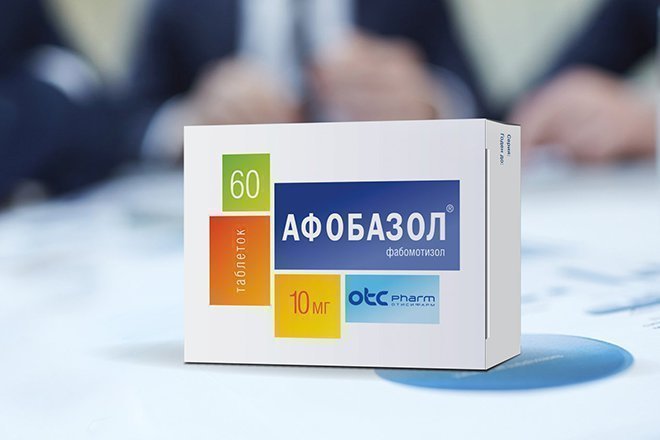
Phenibut is prescribed for VSD and panic attacks; patient reviews indicate that the medication copes well with its task. The drug has a positive effect on well-being due to its complex effect on the body.
Phenibut is also widely used in other medical and psychiatric pathologies. Such indications include:
- psychopathy, unreasonable fear;
- insomnia;
- Meniere's disease;
- obsessive-compulsive neurosis;
- enuresis, stuttering and tics in children and adults;
- prevention of neurotic disorders and anxiety states associated with the preoperative period or upcoming painful diagnosis;
- primary open-angle glaucoma;
- alcoholism (with complex treatment);
- suicidal tendencies.
Dosage and side effects
For the diagnosis of VSD, the drug is taken after meals, 0.25-0.5 g orally for adults, 3 times a day. The standard course of treatment lasts from 2 to 3 weeks. Elderly people are prescribed a dosage not exceeding 0.5 g.
It is strictly not recommended to resort to self-treatment with the drug, since often the acceptable dose depends on the severity of the pathology and other related indications, and the individual characteristics of the patient.
Side effects of Phenibut include:
- nausea, vomiting;
- loss of appetite;
- dizziness, headache;
- increased excitability and irritability;
- insomnia;
- allergic reaction in the form of a rash;
- renal dysfunction.
Interaction with alcohol
You cannot drink alcohol in parallel with treatment. Phenibut enhances the effect of alcoholic drinks, which leads to a deterioration in the general condition and disruption of brain function. The medication has a sedative effect, alcohol slows down the activity of the nerve centers, the similarity of the effects can negatively affect a person’s well-being.
Migraine tablets
Bulgakov's Pontius Pilate, exhausted by attacks of hemicrania, was sure that there was no salvation from a headache that spread to half his head.
Fortunately, a lot has changed since then, and relief from migraines has finally appeared.
What drugs belong to anti-migraine analgesics and how to select them - this will be discussed in the last article of the series on painkillers.
Not just a headache
Headache can have different origins, and, in fact, the selection of the drug depends on it. Experts are still arguing about the mechanism of development of migraine headaches.
It is known for sure that during an attack, the blood vessels of the brain dilate, as a result of which the blood flow to it increases.
That is why sufferers who try to stop a migraine attack with the help of popular antispasmodics, such as Spazmalgon, end up with even more severe pain. After all, antispasmodics contribute to the dilation of blood vessels, including the brain, which means they act together with migraine, and not against it!
There is no need to try to get rid of migraines with the help of combined products containing papaverine (Andipal), drotaverine (No-shpalgin or No-shpa) and other antispasmodics.
They are unlikely to help, and if they do provide relief, it will not be for long. Those who periodically experience migraine attacks should pay attention to triptans and drugs containing ergotamine.
They are among the targeted anti-migraine drugs.
Triptans: the “correct” effect on blood vessels
The subgroup of antimigraine analgesics called triptans is still very young: its first representative, sumatriptan, saw the world in 1991. And yet, over a quarter of a century, he managed to become famous and become the gold standard for migraine treatment.
The mechanism of action of triptans is aimed directly at the process that triggers pain. Drugs in this group interact with special receptors located in the blood vessels of the brain, which leads to their narrowing.
Thus, triptans do not exhibit the direct analgesic activity characteristic of traditional analgesics, and yet they still work. This fact once again proves that migraine is not an ordinary headache that can be easily calmed with paracetamol or aspirin.
In addition to sumatriptan, other drugs from the triptan group are registered in Russia. They are easy to “calculate” among the medicinal variety - the international names of these drugs always end with -triptan: naratriptan, frovatriptan, eletriptan.
All triptans work in the same way, but the effects may vary depending on the individual's sensitivity. I will add that triptans are most effective if taken in the early stages of a migraine, at the very beginning of the attack. 2 hours after the first dose, the dose can be repeated to “fix” the result.
Ergot alkaloids
A pest fungus, ergot, likes to live on some cereal crops, such as wheat or rye. It produces a large amount of toxic substances - alkaloids, which in low doses can have a wide variety of effects on the human body.
Ergotamine has found widespread use in medicine. It, like triptans, interacts with receptors that constrict blood vessels in the brain, and also exhibits a direct vasoconstrictor effect on vascular smooth muscles. In this regard, ergotamine preparations are widely used as anti-migraine analgesics.
However, if you start looking for a medicine called “ergotamine” in pharmacies, you will be disappointed. Ergotamine belongs to the so-called list A, which includes drugs and poisons, and is sold exclusively with special doctor’s prescriptions, equipped with many seals and signatures.
Combination preparations containing ergot alkaloids, such as Nomigren, are much more accessible. It contains a complex of ergotamine (0.75 mg), an analgesic, antispasmodic, antiemetic and caffeine. However, Nomigren has a solid list of contraindications and side effects.
Russian industry produces another anti-migraine analgesic with ergotamine - Cafergot. In addition to 1 mg of ergot alkaloid, it contains caffeine, which enhances the effect of the main component.
There is one important aspect to remember regarding medications that contain ergot alkaloids. Ergotamine and its salts (in particular, ergotamine tartrate) stimulate uterine contractions, so they are strictly contraindicated during pregnancy.
Indications for use
The instructions note that Phenibut is contraindicated in the following cases:
- Acute renal failure;
- Age up to eight years;
- Lactation;
- Pregnancy;
- Individual hypersensitivity to this drug or to one of the substances contained in the drug.
Phenibut is prescribed with caution to patients with erosive and ulcerative lesions of the gastrointestinal tract and pathologies of the digestive system. This category of patients must be given reduced doses of the drug, since Phenibut is characterized by the ability to irritate the mucous membranes.
Side effects
Side effects while taking phenibut are usually detected at the initial stage of therapy, but only if there are no contraindications, the body is hypersensitive to the components of the medication, and the dosage is observed. Phenibut in general is a low-toxic pharmacological drug.
Side effects appear:
- drowsiness;
- slight dizziness;
- headaches;
- periodic bouts of nausea.
Some patients also experience mood swings, increased irritability, anxiety, and allergic manifestations.
In older patients, blood pressure changes throughout the day.
In case of overdose or non-compliance with the dosage indicated in the annotation, phenibut provokes severe poisoning, intoxication, vomiting, hallucinations, renal failure, weakness, and drowsiness.
If side symptoms occur, patients are washed with gastric lavage and symptomatic therapy is prescribed to normalize the condition. The drug is stopped.
Contraindications
Regarding contraindications, Phenibut is not prescribed for hypersensitivity to the components of the drug, as well as:
- during pregnancy, lactation;
- children under 8 years old;
- in acute renal failure;
- chronic liver pathologies.
Important! As with other phenibut medications, the course of treatment must be prescribed by your doctor. The course, frequency of administration, and duration are prescribed individually.
Phenibut should be taken with caution in case of ulcerative, erosive lesions of the stomach, intestines, as well as if chronic pathologies in the gastrointestinal tract are diagnosed. For these violations, a tranquilizer is prescribed in smaller doses.
Is it addictive?
With long-term use of phenibut (more than six to seven weeks) and non-compliance with medical recommendations, phenibut can cause physical and psychological addiction. After discontinuation of the drug, a person may feel the need for medication due to the fact that the active components of the drug have affected the metabolism.
Addiction is manifested by weakness, nervous conditions, emotional deterioration, dizziness.
Accustoming to phenibut is also possible with prolonged use of it with other drugs, in combination with which the tranquilizer causes a slight feeling of euphoria.
